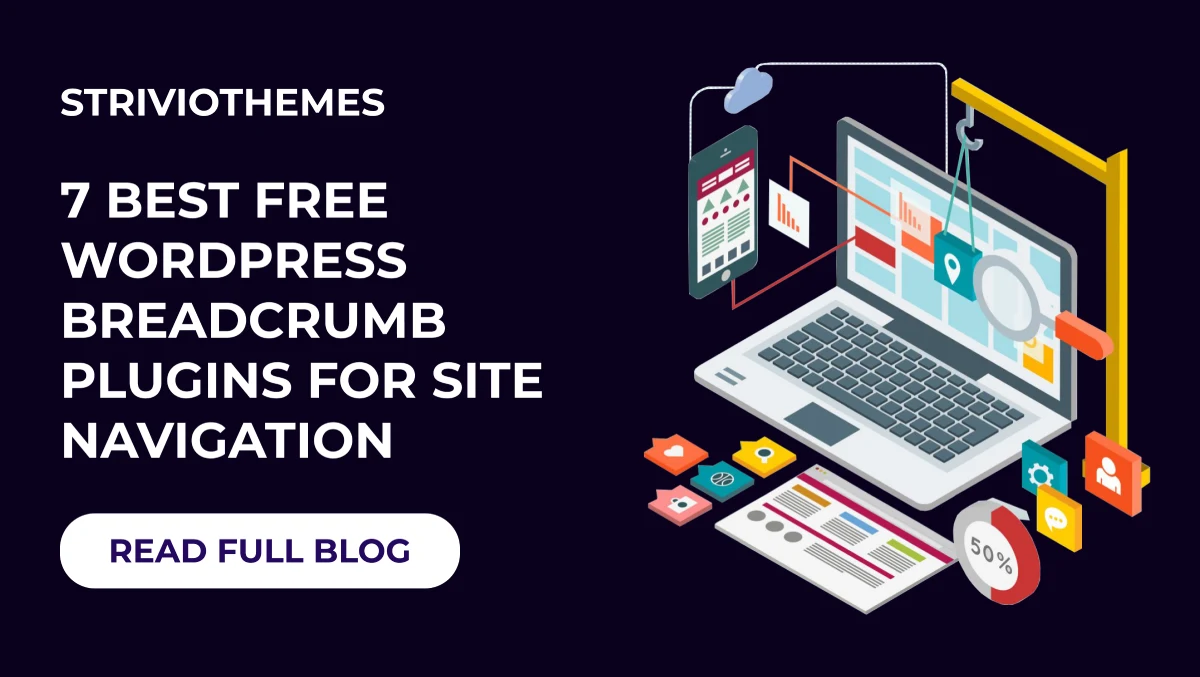WordPress stands as a free, open-source content management system (CMS) that lets users build and manage websites without coding knowledge. Matt Mullenweg and Mike Little created it in 2003 as an offshoot of the b2/cafelog blogging platform. What started as a simple blogging tool has grown into a detailed website creation platform.
WordPress now powers about 43.6% of all websites on the internet. The platform dominates the CMS market with a 62.6% market share, substantially ahead of its competitors. This popularity shows its ease of use, functionality, and strong community support.
The platform runs on PHP and MySQL to store and organize website data, from content in posts and pages to user accounts and site URLs. The WordPress content editor works just like a regular word processor. Users can type text, add images, and click ‘publish.’ WordPress then creates the HTML needed to show the content online.
WordPress comes in two main versions:
- WordPress.org lets users download the software for free and install it on a third-party hosting provider. This version gives complete control over website customization, including themes and plugins.
- WordPress.com serves as a commercial hosting service from Matt Mullenweg’s company, Automattic. It takes care of technical aspects like hosting, security, and maintenance, making it perfect for beginners, but with some limitations.
The open-source nature of WordPress attracts thousands of volunteers worldwide who help improve its features. This shared development approach keeps the platform modern, secure, and packed with features.
WordPress offers an easy-to-use dashboard interface despite its technical complexity. Website owners can create pages, publish posts, change how things look, and manage their sites without technical expertise.
The platform’s flexibility allows the creation of many website types. Business websites, eCommerce stores, blogs, portfolios, forums, social networks, and membership sites are all possible. This versatility comes from its huge library of themes and plugins that add functions and change appearances.
WordPress uses the GNU General Public License. Users can freely use, modify, and share the software and its derivatives. This open license has created a thriving ecosystem of developers and designers who contribute to its ongoing progress and success.
How does WordPress work as a CMS?
WordPress works through a two-part system that keeps content creation separate from content delivery. The CMS splits into two main applications:
- Content Management Application (CMA): This back-end interface lets administrators create, modify, and publish website content through the WordPress Admin Dashboard (wp-admin). The dashboard gives access to content editors, user management, and content repositories.
- Content Delivery Application (CDA): The front-end technology shows content to website visitors and displays published materials in their final form.
WordPress’s technical core runs on the PHP programming language with a MySQL-compatible database. These tools store and organize website elements like posts, pages, user accounts, and site settings. WordPress can run on Linux, Windows, or BSD servers, but Linux environments give the best performance because of the core requirements.
The system’s hook-based architecture makes it highly extensible. Hooks are PHP code snippets that help plugins work with core features and talk to each other. You’ll find two types of hooks:
Actions let developers add data or change WordPress operations at specific points in the core, plugins, and themes. Filters help modify data while the code runs. This setup lets developers add new features without touching the core files.
WordPress’s core contains all the PHP code needed to manage content with registered users. On top of that, it uses object-oriented programming through classes that you can access globally with hooks and functions to show in a modular design.
The block-based editor works like familiar word processors to create content. Users add text, images, and multimedia elements without knowing how to code. WordPress processes this content through its CDA component when published.
A standardized API handles everything from database interactions to theme changes. Developers build new features on WordPress knowing they’ll work in all updated installations. The platform makes complex web development simple with its user-friendly interface while giving powerful customization options to technical users.
WordPress.com vs WordPress.org: What’s the difference?
WordPress comes in two distinct forms. Both share the same core software but work differently in practice. Many beginners get confused between these two variants: WordPress.com and WordPress.org.
WordPress.org is the self-hosted version of WordPress. Users need to download the free WordPress software and install it on a web hosting service they buy separately. This version gives users complete ownership and control of their website. They get full access to their site’s files, database, and code. Users can customize everything through themes and plugins without restrictions.
WordPress.com is a commercial hosting service run by Automattic, a company that WordPress co-creator Matt Mullenweg founded. This hosted solution takes care of all technical aspects of running a website. The service manages hosting infrastructure, security, and backups. Users can choose from various subscription tiers, from free basic accounts to premium business plans.
Here are the key differences between these platforms:
- Hosting and Domain: Users of WordPress.org must buy hosting and a domain name separately. WordPress.com’s plans include hosting, with free subdomains (yoursite.wordpress.com) on basic plans and custom domains on paid plans.
- Cost Structure: WordPress.org costs include separate charges for hosting ($3-$25/month), domain registration ($10-$15/year), and optional premium themes or plugins. WordPress.com uses a freemium model with limited free plans and premium tiers from $4 to $45 monthly.
- Customization Capabilities: WordPress.org gives unlimited customization with access to over 59,000 free plugins and 8,000+ themes. WordPress.com only allows plugin installation on Business plans ($25/month) and above, with fewer theme options on lower-tier plans.
- Monetization Options: WordPress.org lets users monetize their sites however they want. They can use advertising, e-commerce, membership sites, and more. WordPress.com restricts monetization on lower plans and doesn’t allow certain types of advertising.
- Maintenance Responsibility: WordPress.org users must handle all maintenance themselves. This includes updates, security, and backups. WordPress.com manages these technical aspects automatically.
- Target Users: WordPress.org suits users who need complete control and customization options. These include developers, businesses, and serious bloggers. WordPress.com works best for beginners, casual bloggers, and people who value convenience over control.
Each option has its advantages based on what users need. The choice depends on technical expertise, budget, and website goals. Understanding these differences helps beginners make smart decisions as they start their WordPress site.
Key parts of a WordPress website
A fully functioning WordPress website relies on three key components working together. These elements shape how your WordPress installation looks and works.
What is a WordPress theme?
A WordPress theme combines template files, stylesheets, and code that control your website’s look and layout. Your theme shows content in specific ways without changing the actual information. It decides important visual elements like typography, color schemes, page layouts, and navigation structures throughout your site.
WordPress offers two main types of themes: block themes and classic themes. Modern block themes use HTML-based templates that you can edit in the Site Editor. Classic themes, which have been around since WordPress 1.5, use PHP templates. Some themes blend both approaches into hybrid versions.
The WordPress ecosystem has thousands of free and Premium WordPress themes. You’ll find free options in the WordPress.org Theme Directory and premium versions with advanced features. Premium themes usually give you more customization choices, regular updates, and dedicated support than their free counterparts.
What is a WordPress plugin?
WordPress plugins are code packages that add new features to your WordPress website. Users can customize their sites without touching core files or needing advanced coding skills. These plugins work through a hook-based system that connects with WordPress core functions using actions and filters.
The WordPress Plugin Directory has over 50,000 free plugins that can turn a simple website into specialized platforms like online stores, learning systems, or social networks. You’ll find everything from simple contact form tools to expandable solutions for e-commerce.
Your WordPress installation comes with two default plugins: Akismet protects against spam, and Hello Dolly stands as WordPress’s first official plugin. These plugins live in the wp-content/plugins directory of your WordPress site.
What is WordPress hosting?
WordPress hosting provides specialized web services optimized for WordPress websites. Your hosting service delivers server infrastructure, resources, and technical settings that help WordPress run smoothly. This includes compatible PHP versions, MySQL databases, and performance-tuned configurations.
Good WordPress hosting gives you features like one-click installation, automatic updates, and regular backups. Most providers add WordPress-specific security through firewalls, malware scanning, and vulnerability checks.
Several factors matter at the time you choose a hosting provider. Look for reliable uptime records, room to grow, strong security features, user-friendly control panels, and affordable pricing. Many companies also provide dedicated WordPress support teams that understand common platform challenges.
How to start using WordPress
Getting started with WordPress needs some important decisions and setup steps. The process moves smoothly from choosing your platform to adding extra features.
Choose between WordPress.com and WordPress.org
Your first significant choice is between WordPress.com and WordPress.org. WordPress.org (self-hosted) lets you control everything about customization and making money from your site. WordPress.com manages the technical stuff automatically, which makes it perfect for beginners who want something simple.
Pick a domain and hosting plan.
After picking your platform, you’ll need a domain name – your site’s address on the internet. Most hosting companies give you a free domain name when you buy your first year of hosting. WordPress-specific hosting makes your site run better with features like automatic backups, security checks, and software updates.
Install WordPress and select a theme.
WordPress.org users can install the platform through their host’s tools or upload it manually. The next step takes you to Appearance > Themes, where thousands of designs await. Themes shape your site’s look without changing your content. Paid themes usually give you more design options than free ones.
Add plugins to extend functionality.
Plugins boost your WordPress site’s capabilities. You can find them in your WordPress dashboard under Plugins > Add New. These small software packages add features like contact forms or full online stores. The best part? You don’t need any technical knowledge to use them.






